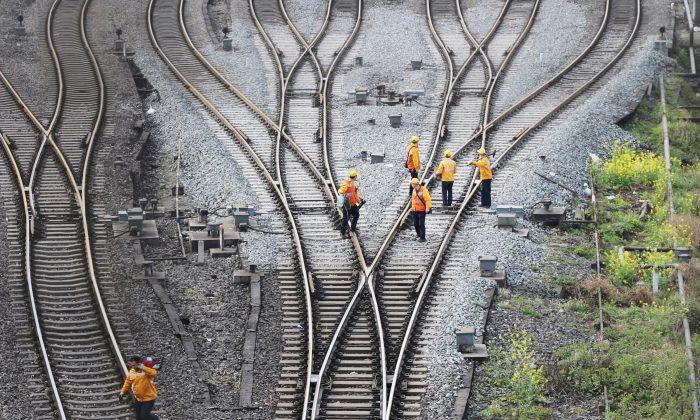China moved to bail out local governments that provided economic stimulus during the Sino-U.S. trade war by slashing taxes and massively spiking fixed asset investment.
China’s average after-inflation (real) GDP growth was about 15.8 percent in the decade leading up to the 2008 financial crisis, falling to about 6.8 percent over the next decade, and was on the verge of plunging into negative territory in late 2018 as the Sino-U.S. trade war ramped-up.
China bailed out its economy in the first quarter of 2019 with government-sponsored
114.3 percent increase in fixed asset investment and by slashing taxes and fees by nearly
$298.3 billion, or about 2 trillion yuan.
The combination of stimulus pushed real GDP growth up to 9.9 percent in the second quarter of 2019, but the central government pushed the spending and lost tax revenue burden down to local governments, according to Enodo Economics.
But with capital flight accelerating from an annual rate of
$22 billion in 2018 to $139.2 billion in the first half of 2019, the International Monetary Fund Board of Directors’ annual China financial review issued on July 31
warned: “The Chinese economy is facing external headwinds and an uncertain environment.”
The Epoch Times
reported in mid-August that with China’s “Shibor” overnight lending rate—which large state-owned banks charge local banks—doubling, the People’s Bank of China was forced into its first insolvent bank bail-outs in the last two decades.
With local government squeezed by losses of revenue, China’s government spending
declined for the first time this year in August. The Shibor lending rate fell back down in September on the central bank bailouts and local government austerity moves.
China’s State Council on Oct. 9 issued a “
Five-Five Sharing” order that canceled the scheduled slashing of the local government’s allocation of China’s value-added-tax (VAT) from 50 percent to 25 percent.
As China’s biggest tax source, the over $100 billion transfer from the central government dramatically increased the solvency of local governments and caused Shibor overnight borrowing costs for local banks to tumble.
Over the next two days, a Chinese delegation led by Vice Premier Liu He visited the U.S. White House and negotiated what President Trump referred to as a “Phase 1” truce in the Sino-U.S. trade war.
In exchange for the United States not raising tariffs on Oct. 15, China agreed to
boost annual U.S. soybean purchases from 20 million to 30 million tons. The pact also envisions some form of currency stabilization arrangement to prevent predatory undervaluing of China’s currency exchange rate.
U.S. Treasury Secretary Steven Mnuchin called the interim agreement “productive” as U.S. commodity futures prices spiked higher, with soybeans hitting a
three month high.
With the UN Food and Agriculture Organization reporting earlier in the week that the Chines outbreaks of African swine fever has spread to twenty-one provinces, four major municipalities, most of Mongolia and Inner Mongolia, Tibet, the Autonomous Regions and the Hong Kong Special Administrative Region, the U.S. National Pork Producers Council
welcomed the trade progress and commented that China has excluded pork from retaliatory tariffs and is currently purchasing U.S. pork.
Chriss Street is an expert in macroeconomics, technology, and national security. He has served as CEO of several companies and is an active writer with more than 1,500 publications. He also regularly provides strategy lectures to graduate students at top Southern California universities.





